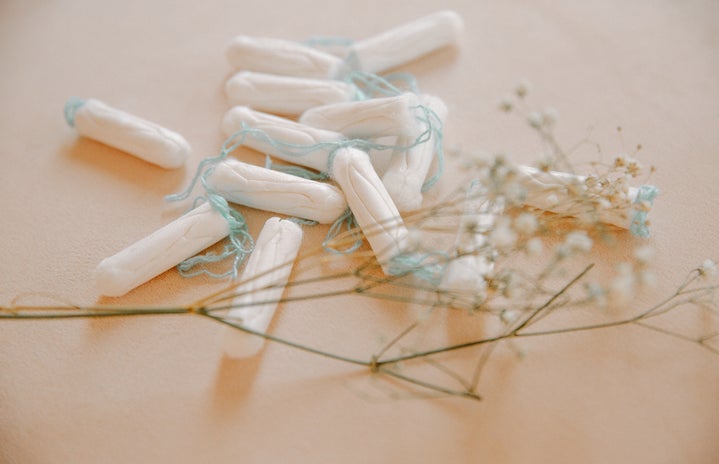For most people, it is a natural assumption that the period products we find at the store have been tested for our health and comfort. Ideally, when we are looking for a new box of pads or tampons, we would be able to choose whichever has the cutest packaging or best price point. For a long time, I never even considered the complexity of what makes up a pad or tampon. Like many others who get their periods, it has always been easy to buy what was most convenient, with little thought as to what ingredients could be within these items. However, it may not be as simple as that. Something as basic as a pad may seem like it would have a list of straightforward ingredients but this is not the case. In fact, the majority of name-brand feminine hygiene products contain a variety of unnatural materials and chemicals.
If you’ve never put too much thought into your pad or tampon ingredients, it is completely understandable – and also not your fault. Finding clear answers and valid research about menstrual products is purposely vague and difficult to find. This is because, technically, the U.S. Food and Drug Administration classifies pads and tampons as medical devices. This means that companies are not federally required to disclose their ingredient labeling to the general public, ultimately making it difficult to find a clear answer to a simple question. Because there are no federal requirements set in place, certain states have fought against these vague standards to try and enact new policies. In October 2021, New York became the first state to legally require period product makers to disclose all of the ingredients used in their products. While many states have yet to follow in New York’s footsteps, their efforts have set a much-needed precedent on the importance of ingredient labeling and have placed pressure on brands to move forward with more transparency.
So, what exactly are our period products made of? While cotton may be the main component of these products, it is certainly not the only one. Some of the more common ingredients you may find in your pads or tampons include rayon, polyester and other synthetic fibers. Seeing as these are manmade materials, they are often highly processed. The cotton that is included is also not guaranteed to be entirely natural. Conventional cotton, which is often grown with pesticides, can be harvested and used within pads and tampons. It may seem unrelated but even the chemicals that were once used to fertilize cotton plants can contaminate the final product, especially when it is manufactured and exposed to a sensitive part of the body. On top of this, other chemicals like titanium dioxide, polypropylene and chlorine have all been traced back to name-brand period products. Another common yet questionable ingredient that you may find in these products is added fragrances. Pads and tampons will often advertise themselves as having a “light” and “clean” scent, which may seem enticing, but can actually be extremely toxic for you. Added fragrances can produce an excess amount of bad bacteria, resulting in irritation and infection, as well as an imbalanced pH of the vagina.
Granted, not all chemicals are inherently bad. Since there is such little research on modern menstrual products, there are also no confirmed long-term health effects. Despite not having this information readily available, it is important to note that the vagina is an extremely sensitive organ. On top of this, its skin is also naturally absorptive, meaning that it is being exposed to certain chemicals and materials for hours on end, days at a time, every month.
While there is certainly a bigger push for product transparency, especially from health and environmental advocates, there is still a lot of work to be done to better understand our menstrual products. Most importantly, it should be up to us to decide the type of products we want to invest in and we should especially be in charge of choosing what is best for us and our bodies. The only way we can do this is by having the necessary information available to us. Even if this may be hard to come by, more and more brands are beginning to include ingredient labeling on their menstrual products. For your own health and peace of mind, I urge you to maybe take a second longer in the grocery store aisle to find a product that best fits your needs. At the end of the day, whatever pad, tampon, diva cup, or other product you decide to choose, is entirely up to you. What matters most is that you can confidently feel comfortable and well-informed about what you are putting into your body.
Want to see more HCFSU? Be sure to like us on Facebook and follow us on Instagram, Twitter, TikTok, YouTube and Pinterest!


